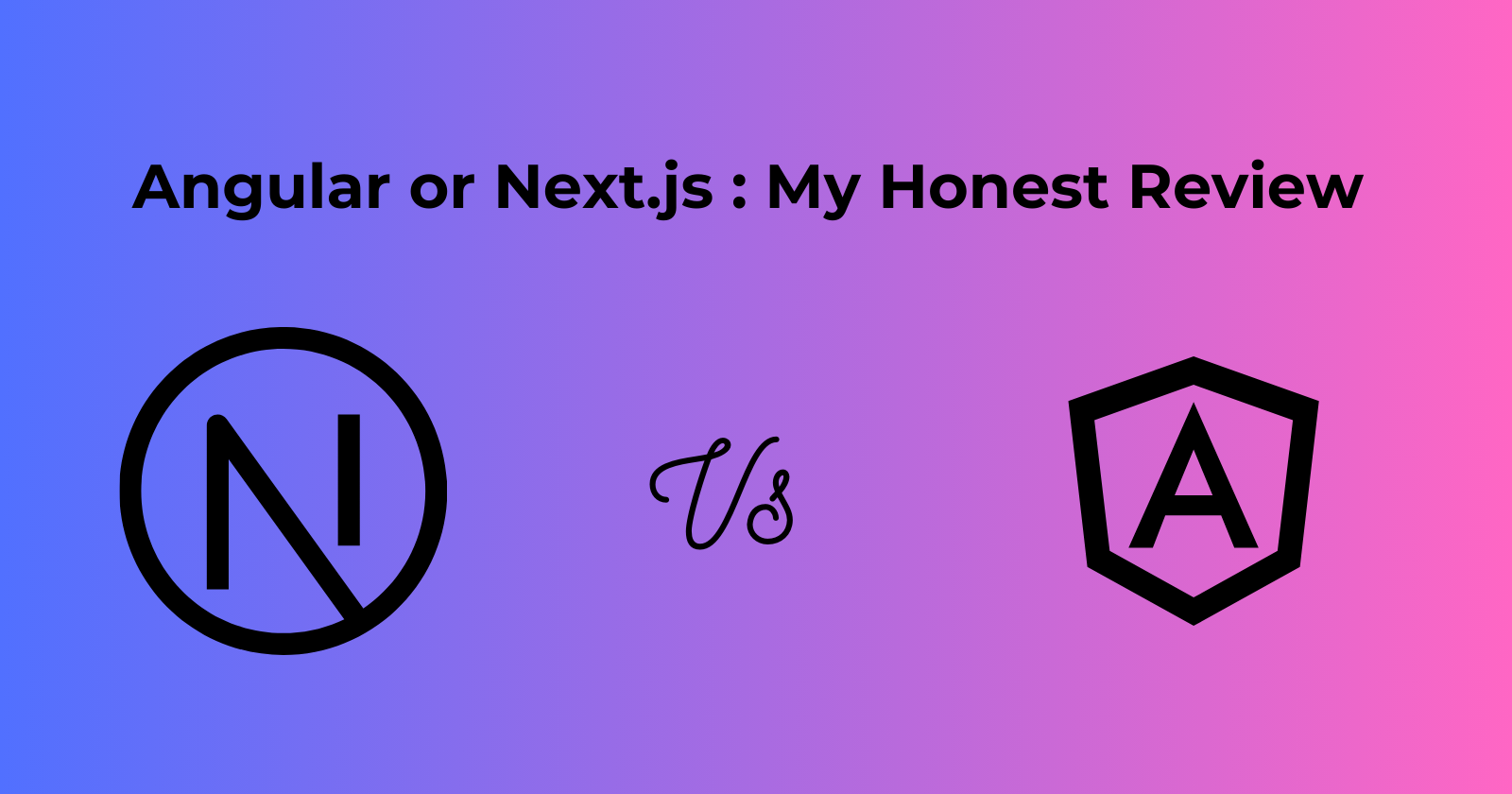Angular or Next.js: My honest review
 Benedicta Onyebuchi
Benedicta Onyebuchi
As a developer, I've had the opportunity to work with various frameworks, but two that have stood out to me in different capacities are Angular and Next.js. If you’re anything like me, you’ve probably heard endless debates about which framework is better. But here’s the thing: it’s not really about which one is better. It’s about which one fits you and your project. Let me walk you through my experience with both, sharing the ups, downs, and everything in between.
Angular
Let’s start with Angular. If I had to describe Angular in one word, it would be “intense.” It’s like that super-smart friend who’s amazing at solving complex problems but sometimes makes you feel like you need a Ph.D. just to keep up.
My struggles
Steeper learning curve: Honestly, getting started with Angular felt like trying to climb a mountain. There’s so much to learn, and it’s easy to get overwhelmed. But once you get the hang of it, you start to see why it’s worth the effort.
Routing Complexity: Navigating through Angular’s routing system was a bit of a headache at first. I mean, I just wanted to go from one page to another, but Angular had other plans. After some trial and error, and a deep dive into the docs, I got a hang of it.
Confusing Template Syntax: Angular’s template syntax can be…well, confusing. It’s powerful, but it takes a while to wrap your head around all the directives and bindings. There were moments I was staring at my screen, wondering why nothing was working, only to realise I missed a tiny detail.
Verbose Code: Angular loves its boilerplate. And while this means your project has a solid foundation, it also means you’ll be writing a lot of code—sometimes more than you’d like. It’s solid, but man, it takes time.
Complexity in Styles Management: If you like writing SCSS, Angular will give you plenty of opportunities. However managing styles across multiple components can get messy fast. Keeping everything consistent felt like trying to keep a group of rats in line—not impossible, but definitely challenging.
My Recommendation
- Angular’s CLI is your best friend. It speeds up development and handles a lot of the boilerplate for you. Pair it with the official docs, and you’re good to go. And don’t forget—there are tons of tutorials and courses out there to help you along the way.
Next.js
Now, let’s talk about Next.js. If Angular is the intense, complex friend, Next.js is more laid-back. It’s lightweight, flexible, and just makes life easier—most of the time.
My struggles
- SSR Challenges: Server-side rendering (SSR) is one of Next.js’ standout features, but it’s not always a walk in the park. Managing dynamic data and avoiding those pesky hydration errors can be tricky. But once you get it right, the payoff is worth it.
So, which one do I prefer?
Here's the deal: When I’m working on a project that requires high scalability and a well-defined architecture, I’ll pick Angular every time. It’s a powerhouse, perfect for big, complex applications that need to stand the test of time.
But when I need something lightweight, easy to deploy, and flexible, Next.js is my go-to. It’s ideal for projects where I need to finish things quickly without sacrificing quality.
It’s all about what you need and what feels right for you. Both Angular and Next.js have their strengths and weaknesses, and the best choice is the one that fits your project—and your style—the best.
Happy coding :)
Subscribe to my newsletter
Read articles from Benedicta Onyebuchi directly inside your inbox. Subscribe to the newsletter, and don't miss out.
Written by

Benedicta Onyebuchi
Benedicta Onyebuchi
I'm Benedicta, a technical writer and frontend developer. I'll guide you through complex or simple programming concepts